TickerTape
Weekly Global Stablecoin & CBDC Update

This Week’s Stories
- BOK Prioritizes Stablecoins
- China Faces Pressure to Explore Stablecoins
- GENIUS and STABLE Acts Lack Consumer Protection
- EU-US Digital Finance Coordination
- S. African ID Verification Fee Increase
- Yellen Pushes for Mid-July GENIUS Act Completion
- Proper Regulatory Process for Digital Asset Securities
- ECB Unveils DLT Settlement Plan
- U.S. Crypto Week Announcement
- India’s Stablecoin Paper Expected Soon
The Bank of Korea (BOK) has temporarily suspended its central bank digital currency (CBDC) pilot program, known as the Hangang project, following a strategic shift in South Korea’s digital finance policy. The suspension comes after the first phase concluded in June 2025, which involved 100,000 citizens testing the digital won at participating merchants including 7-Eleven. The BOK has notified participating banks that discussions for the second phase, originally scheduled for Q4 2025, have been paused indefinitely. The decision coincides with President Lee Jae Myung’s administration prioritizing Korean won-pegged stablecoins over a national CBDC. The ruling Democratic Party submitted legislation in June 2025 allowing companies with at least 500 million KRW in equity to issue stablecoins. Seven participating banks, each having invested approximately 5 billion Korean won ($3.7 million) in the CBDC pilot, expressed concerns about the financial burden and lack of clear commercialization plans. The central bank indicated it wants to observe how stablecoin legislation develops before determining if CBDCs and stablecoins can coexist in South Korea’s financial ecosystem.
Key takeaways:
- BOK suspended the second phase of its CBDC pilot program originally scheduled for Q4 2025
- First phase involved 100,000 users making test payments at merchants including 7-Eleven from April to June 2025
- Seven participating banks invested 5 billion KRW ($3.7 million) each in the pilot with no clear commercialization path
- South Korea’s new administration under President Lee Jae Myung prioritizes stablecoins over CBDCs
- Democratic Party submitted bill allowing qualified companies to issue won-pegged stablecoins
- BOK wants to monitor stablecoin legislation before deciding on CBDC-stablecoin coexistence
Why it matters:
- Represents first major CBDC pilot suspension by a developed economy due to competing digital asset priorities
- Signals potential shift in global CBDC development as countries evaluate stablecoins as alternatives
- Highlights challenges central banks face when government policy priorities change during CBDC development
- Demonstrates the financial burden and uncertainty that can impact bank participation in CBDC pilots
- May influence other central banks’ approaches to balancing CBDCs with private stablecoin initiatives
China is experiencing mounting pressure from policy advisers and economists to explore stablecoins for cross-border payments, as the United States advances legislation to strengthen the dollar’s dominance through digital token technology. While China maintains its comprehensive ban on cryptocurrency activities, recent statements from senior central bank officials have renewed discussions about stablecoins’ potential role in international finance. People’s Bank of China Governor Pan Gongsheng stated in June 2025 that stablecoins could revolutionize international finance, particularly as geopolitical tensions expose the fragility of traditional payment systems that can be weaponized as sanctions tools. Former central bank head Zhou Xiaochuan warned that dollar-linked stablecoins could facilitate dollarization, while other officials discussed yuan-based stablecoins to support China’s currency internationalization efforts. Morgan Stanley suggests China could use Hong Kong to trial offshore yuan-based stablecoins without violating Beijing’s capital controls. The discussions gained urgency after the U.S. Senate passed stablecoin regulation on June 17, 2025, with Treasury Secretary Scott Bessent arguing that stablecoins strengthen rather than threaten dollar dominance. Chinese economists warn that failing to develop yuan-linked alternatives could result in withdrawing from next-generation global currency competition.
Key takeaways:
- Chinese officials increasingly view stablecoins as potential tools for international finance despite crypto ban
- PBOC Governor Pan Gongsheng highlighted stablecoins’ potential to revolutionize cross-border payments
- Former PBOC head Zhou Xiaochuan warned about dollar-linked stablecoins facilitating dollarization
- Morgan Stanley proposes using Hong Kong to trial offshore yuan-based stablecoins
- U.S. Senate’s stablecoin bill passage on June 17, 2025 intensified China’s strategic considerations
- Economists warn China risks losing next-generation currency dominance without stablecoin development
Why it matters:
- Represents potential major shift in China’s approach to digital currencies and global payment systems
- Highlights the geopolitical dimension of stablecoin development in U.S.-China financial competition
- Could accelerate development of yuan-based digital payment alternatives to dollar-dominated systems
- Demonstrates how regulatory developments in one jurisdiction can influence global digital finance strategy
- May lead to creation of competing stablecoin ecosystems based on different sovereign currencies
New York Attorney General Letitia James issued a strong warning to lawmakers that pending federal stablecoin legislation puts Americans at risk and requires significant strengthening. In a letter dated July 1, 2025, James criticized both the Senate’s GENIUS Act and the House’s STABLE Act for lacking necessary consumer safeguards. She argued that stablecoin issuers should be regulated more like banks and required to provide deposit insurance protection. James, who has led high-profile enforcement actions against crypto firms, stated that while she recognizes the urgency of stablecoin regulation, the current bills fail to include adequate guardrails to protect the American public. The Attorney General emphasized the need for Congress to take sufficient time to draft legislation that enhances innovation while protecting the banking system. The GENIUS Act, which has White House backing and Senate approval, requires stablecoins to be fully backed by U.S. dollars or liquid assets and mandates annual audits for issuers with market capitalizations exceeding $50 billion. President Trump has indicated he wants stablecoin legislation on his desk by August 2025, creating pressure for rapid legislative action despite concerns about consumer protection gaps.
Key takeaways:
- NY Attorney General Letitia James warns that GENIUS and STABLE Acts lack adequate consumer protection
- James calls for stablecoin issuers to be regulated more like banks with required deposit insurance
- GENIUS Act requires full backing by U.S. dollars/liquid assets and annual audits for large issuers
- President Trump seeks stablecoin legislation by August 2025, creating pressure for rapid passage
- James emphasizes need to balance innovation with protection of the existing banking system
- Warning comes despite White House backing and Senate approval of the GENIUS Act
Why it matters:
- Highlights ongoing regulatory debate about appropriate level of consumer protection in stablecoin legislation
- Demonstrates tension between innovation advocacy and consumer protection in digital asset regulation
- Shows how state-level enforcement officials may push for stricter federal standards
- Indicates potential challenges in achieving consensus on final stablecoin regulatory framework
- Reflects broader concerns about systemic risks from rapid stablecoin market growth without adequate safeguards
The European Union and United States held their Joint Financial Regulatory Forum on July 1, 2025, with digital finance matters featuring prominently in discussions between regulators from both jurisdictions. EU participants provided updates on the implementation of the Markets in Crypto-Assets (MiCA) Regulation and emphasized the importance of the Financial Stability Board’s work on crypto assets, including stablecoins and broader crypto market activities. European regulators also shared considerations for the ongoing development of the Digital Euro CBDC project. U.S. participants updated their counterparts on American digital asset policy priorities and ongoing work related to crypto assets, including activities of the SEC Crypto Task Force. The forum participants discussed collaborative efforts to enhance cross-border payments, including work under the G20 Roadmap for Enhancing Cross-Border Payments. Treasury Secretary Scott Bessent issued the statement highlighting the continued importance of international dialogue for developing appropriate regulatory standards while monitoring vulnerabilities and enhancing financial system resilience. The discussions reflect growing coordination between major economies on digital finance regulation as both jurisdictions advance their respective frameworks for digital assets and central bank digital currencies.
Key takeaways:
- EU provided updates on MiCA Regulation implementation and Digital Euro development progress
- U.S. shared digital asset policy priorities and SEC Crypto Task Force activities
- Both sides emphasized Financial Stability Board’s work on stablecoins and crypto market oversight
- Forum addressed collaborative efforts on cross-border payments under G20 initiatives
- Discussion focused on maintaining level playing field while avoiding overly burdensome regulation
- Meeting demonstrates growing international coordination on digital finance regulatory approaches
Why it matters:
- Shows increasing coordination between major economies on digital asset regulation and CBDC development
- Reflects recognition that digital finance regulation requires international cooperation to be effective
- Demonstrates commitment to maintaining financial stability while supporting innovation
- Highlights importance of cross-border payment system improvements in digital finance development
- Indicates ongoing dialogue may help prevent regulatory fragmentation in global digital asset markets
South African digital bank TymeBank is contemplating legal action against the Department of Home Affairs following a dramatic 6,500% increase in identity verification fees, effective July 1, 2025. The fees for real-time ID verification queries increased from R0.15 to R10 per query, raising customer onboarding costs from R55 to R75 per account. TymeBank CEO Coen Jonker characterized the increase as a “regressive tax” that undermines digital financial inclusion and anti-money laundering compliance efforts. The bank argues that the fee hike particularly impacts low-income customers, including social grant recipients who represent a significant portion of TymeBank’s customer base. While Home Affairs offers a R1 batch-processing option, TymeBank contends this alternative is impractical for real-time banking services that require immediate identity verification. The dispute has created divisions within the South African banking sector, with Capitec supporting the fee increase and agreeing to absorb the additional costs, while TymeBank and telecommunications operators criticize the impact on financial inclusion. The controversy highlights broader challenges facing digital banks in emerging markets where government fee structures can significantly impact business model viability and customer accessibility.
Key takeaways:
- Home Affairs increased ID verification fees from R0.15 to R10 per query (6,500% increase) effective July 1, 2025
- TymeBank’s customer onboarding costs increased from R55 to R75 per account due to the fee hike
- CEO Coen Jonker calls the increase a “regressive tax” undermining financial inclusion efforts
- The change particularly impacts low-income customers and social grant recipients
- Capitec supports the fee increase while TymeBank and telecom operators oppose it
- TymeBank considering legal action to challenge the fee structure
Why it matters:
- Demonstrates how government fee policies can significantly impact digital bank business models and customer access
- Highlights tensions between revenue generation needs and financial inclusion objectives in emerging markets
- Shows how regulatory and administrative changes can create competitive advantages or disadvantages for different banks
- Illustrates the challenges digital banks face in serving low-income populations when compliance costs increase
- Reflects broader issues around the cost of digital identity verification in developing financial markets
US Treasury Secretary Janet Yellen announced that stablecoin legislation is expected to be finalized by mid-July 2025, marking a crucial deadline for regulatory clarity in the digital asset space. The legislative push centers on the Guiding and Establishing National Innovation for US Stablecoins (GENIUS) Act, which has already received Senate approval and now awaits House action. Yellen has emerged as a vocal advocate for rapid implementation of stablecoin guidelines, emphasizing the need for systemic risk mitigation and alignment with President Trump’s agenda for swift legislative action. The Treasury Secretary stated that “the administration urges the House to swiftly send a comprehensive stablecoin bill for final approval, ensuring robust oversight and stability in this emerging market.” The anticipated legislation would establish a framework for “Permitted Payment Stablecoin Issuers,” potentially reshaping the competitive landscape for major stablecoins including USDT, USDC, and DAI. Market analysts suggest this regulatory clarity could trigger increased institutional investment and bolster on-chain liquidity in DeFi markets. The legislation represents a significant step toward comprehensive digital asset regulation in the United States.
Key takeaways:
- Treasury Secretary Janet Yellen targets mid-July 2025 for final stablecoin legislation completion
- GENIUS Act awaits House approval after successful Senate passage
- New framework would create “Permitted Payment Stablecoin Issuers” category
- Expected to impact major stablecoins including USDT, USDC, and DAI significantly
- Could boost institutional adoption and increase DeFi market liquidity
- Represents alignment between Treasury Department and presidential priorities
Why it matters:
- Provides concrete timeline for long-awaited stablecoin regulatory clarity in the United States
- Could trigger significant institutional capital flows into regulated stablecoin markets
- Establishes framework that may influence global stablecoin regulation standards
- Demonstrates high-level government commitment to digital asset market development
- May accelerate mainstream adoption of stablecoins for payments and financial services
The Securities Industry and Financial Markets Association (SIFMA) has urged the Securities and Exchange Commission to reject immediate requests for no-action or exemptive relief from digital asset firms seeking to offer tokenized equities and other digital securities outside traditional regulatory frameworks. In a letter dated June 30, 2025, SIFMA expressed significant concern about reports indicating certain digital asset firms have submitted requests for immediate relief that would allow them to operate trading platforms for tokenized securities without full compliance with federal securities laws. The trade association argued that such structural changes to securities market regulation are too significant to be addressed through expedited relief processes rather than comprehensive notice-and-comment rulemaking. SIFMA emphasized that allowing digital asset platforms to bypass established investor protection frameworks could undermine market integrity and consumer safeguards. The organization called for any changes to securities trading infrastructure to undergo proper regulatory review with public input and industry engagement. This position reflects growing tensions between traditional financial institutions and emerging digital asset platforms over regulatory equality and market access in the evolving digital finance landscape.
Key takeaways:
- SIFMA opposes immediate regulatory relief for digital asset firms offering tokenized securities
- Trade association calls for comprehensive notice-and-comment process instead of expedited relief
- Concerns focus on potential bypass of federal securities law protections for investors
- Emphasis on maintaining regulatory equality between traditional and digital asset platforms
- Request for proper public input and industry engagement in regulatory changes
- Letter highlights tensions over market access and regulatory frameworks in digital finance
Why it matters:
- Demonstrates traditional finance industry’s push for regulatory parity with digital asset firms
- Highlights ongoing debate over appropriate regulatory pathways for tokenized securities
- Could influence SEC’s approach to digital asset exemptions and no-action letters
- Reflects broader concerns about maintaining investor protections in digital asset markets
- May shape future regulatory framework for tokenized traditional securities
The European Central Bank (ECB) has announced a dual-track strategy to enable settlement of distributed ledger technology (DLT) transactions in central bank money, responding to mounting regulatory concerns over private stablecoins. Approved by the ECB Governing Council on June 30 and published July 2, 2025, the plan features a short-term pilot project, Pontes, linking DLT platforms to the existing TARGET Services infrastructure, and a longer-term development track, Appia, aimed at building a fully integrated, DLT-native settlement ecosystem for European and global markets. The pilot phase is expected to launch by Q3 2026. This initiative follows extensive experimentation with over 60 market participants and 50 trials in 2024. ECB President Christine Lagarde recently warned that stablecoins, particularly Tether, pose threats to monetary policy transmission and financial stability due to regulatory gaps. The Bank for International Settlements echoed these concerns, arguing that stablecoins lack the core qualities of sound money and could fragment the monetary system. The ECB’s approach seeks to support innovation while maintaining trust, safety, and regulatory clarity in European financial infrastructure.
Key takeaways:
- ECB launches two-track DLT settlement strategy: Pontes (short-term pilot) and Appia (long-term DLT-native system)
- Aims to integrate tokenized finance into central bank money settlement
- Responds to growing regulatory scrutiny of private stablecoins like Tether
- Pilot phase to launch by end of Q3 2026
- Seeks to balance innovation with monetary stability and regulatory oversight
Why it matters:
- Demonstrates central banks’ proactive stance in shaping the future of digital finance infrastructure
- Aims to counter the risks posed by unregulated stablecoins to monetary policy and financial stability
- Supports the safe integration of DLT and tokenized assets into mainstream financial systems
- Sets a precedent for other central banks navigating the stablecoin-CBDC landscape
U.S. House leadership officially designated the week of July 14 as “Crypto Week,” during which lawmakers will debate and vote on several major cryptocurrency bills. These include the Senate’s GENIUS Stablecoin Act, the Digital Asset Market Structure Clarity Act, and the Anti-CBDC Surveillance State Act. The GENIUS Act, already passed by the Senate, mandates that stablecoins be fully backed by U.S. dollars or similarly liquid assets, requires annual audits for issuers with a market cap exceeding $50 billion, and sets rules for foreign issuers. The Clarity Act aims to clarify the regulatory responsibilities of the SEC and CFTC, while the Anti-CBDC Act would permanently block the creation of a retail central bank digital currency in the U.S., citing privacy concerns. This legislative push aligns with President Trump’s agenda, who has requested a stablecoin bill on his desk by August. House leaders say these steps will provide a clear regulatory framework for digital assets, safeguard financial privacy, and position the U.S. as a global leader in crypto innovation.
Key takeaways:
- House will review and vote on the GENIUS Stablecoin Act, Clarity Act, and Anti-CBDC Surveillance State Act during “Crypto Week”
- GENIUS Act requires full dollar backing and annual audits for large stablecoin issuers
- Anti-CBDC Act seeks to ban a retail U.S. CBDC, citing privacy and surveillance concerns
Legislative push is part of President Trump’s digital asset agenda - Aims to clarify regulatory responsibilities and accelerate stablecoin adoption
Why it matters:
- Marks a pivotal moment for U.S. digital asset regulation and stablecoin oversight
- Could significantly influence global standards for stablecoin backing and audits
- Reflects growing political momentum to block a U.S. CBDC over privacy fears
- Provides regulatory clarity sought by crypto industry and institutional investors
India’s Finance Ministry revealed it is drafting a comprehensive discussion paper on cryptocurrencies, with a particular emphasis on stablecoins. The move comes amid growing global competition for leadership in digital payments and follows the explosive growth of stablecoins in cross-border transactions. The paper, expected later in July, will analyze the potential benefits and risks of stablecoins, including their impact on monetary policy, payment system stability, and consumer protection. Indian regulators are aware of the role stablecoins play in international settlements and remittances and are considering whether to allow regulated stablecoin issuance within the country. Stablecoins, by pegging their value to fiat currencies, have become a battleground for influence in the digital payments space, with the U.S., EU, and China all advancing their own regulatory and technological agendas. India’s forthcoming policy is expected to address these international trends and propose a framework that balances innovation with financial stability and regulatory oversight.
Key takeaways:
- India’s Finance Ministry is preparing a discussion paper focused on stablecoins
- The paper will address benefits, risks, and global regulatory trends
- Stablecoins are central to the international digital payments “arms race”
- Indian regulators are weighing the case for regulated stablecoin issuance
- The move reflects India’s intent to shape digital finance policy proactively
Why it matters:
- Signals India’s growing engagement with global digital finance developments
- Could influence stablecoin regulation in other emerging markets
- May pave the way for regulated stablecoin products in India
- Highlights the geopolitical dimension of digital currency innovation





